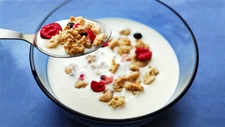Mixtures

TEKS Objective
The student is expected to explore and recognize that a mixture is created when two materials are combined such as gravel and sand, and metal and plastic paper clips.
Essential Understanding
The student knows that matter has measurable physical properties and those properties determine how matter is classified, changed, and used.
Science Background
Mixture Basics: Chem4Kids.com (website) - Simple explanation of the properties of mixtures. When two or more kinds of matter are put together it is called a mixture.
Mixture Basics
by Andrew Rader, Chem4Kids, www.chem4kids.com
Pure Substances, Mixtures, and Separations: Science Alive! (website) - Short reading about the nature of mixtures.
Mixtures: Monroe County Women's Disability Network (website) - Short page with straightforward explanations of mixtures, solutions, suspensions and colloids.
Mixtures
Monroe County Women's Disability Network, www.mcwdn.org
Signature Lesson
Separation of a Mixture: Alabama Learning Exchange (website) - Students explore mixtures, recognize that a mixture is created when two or more materials are combined, and design their own procedures for separating a mixture of four ingredients.
Separation of a Mixture
Alabama Learning Exchange, alex.state.al.us
- Supporting Lessons
- Extensions
- Assessment Ideas
- Literature Connections
- Related
TEKS - Additional Resources
Supporting Lessons
Separating Marbles, Separating Coins, Separating Plastic and Metal Beads: Science Alive! (website) - Three simple separation activities, two with pictures.
Separating a Mixture: Perkins School for the Blind (website) - Activity in which students separate salt from sand.
Separating a Mixture
Perkins School for the Blind, www.perkins.org
Properties of Mixtures and Solutions: University of Virginia (website) - Students make observations, organize and analyze information, and measure and record data while identifying, separating and determining the concentrations of components in mixtures.
Properties of Mixtures and Solutions
University of Virginia, galileo.phys.virginia.edu
Elaboration Lessons and Extensions
Separating Mixtures: SupaScience (website) - Students learn methods for making and separating mixtures.
Separating Mixtures
by Mike Curtis, SupaScience, www.mikecurtis.org.uk
Compounds and Mixtures: BBC (video) - Interactive video on compounds and mixtures.
Compounds and Mixtures
BBC, www.bbc.co.uk
How Can We Find Out What Is in Water? BioEd Online (website and video) - Students use chromatography to separate the components of a mystery liquid that is a mixture of several different food colors.
How Can We Find Out What Is in Water?
BioEd Online, www.bioedonline.org
How Can We Find Out What Is in Water? - Related Video
BioEd Online, www.bioedonline.org
Assessment Ideas
Set out several mixtures (salt and pepper, metal and plastic paper clips, pennies and nickels, gravel and sand, sugar), and ask students to determine whether each is a mixture and provide evidence for their answers. Challenge students to think of ways to separate each mixture into its component parts without touching the samples (heat, magnet, water, evaporation).
Literature Connections
Physics: Why Matter Matters! Green, D. (ISBN-13: 978-0753462140)
Solids, Liquids, and Gases. Ontario Science Centre (ISBN-13: 978-1550744019)
Super Science Concoctions: 50 Mysterious Mixtures for Fabulous Fun. Hauser, J. (ISBN-13: 978-0824968021)
Mix It Up! Solution or Mixture? Maurer, Tracy (ISBN-13: 978-1618102270)
Matter. Cooper, Christopher (ISBN-13: 978-0751361353)
Salt. Walpole, Brenda (ISBN-13: 978-1560740605)
Iron. Hasan, Heather (ISBN-13: 978-1404201576)
Mixtures and Solutions: Why Chemistry Matters. Aloian, M. (ISBN-13: 978-0778742500)
Mixtures and Solutions: Reading Essentials in Science. Karpelenia, J. (ISBN-13: 978-0756946425)
Additional Resources
Mixtures and Solutions: Search PlanIt (website) - Links to lesson plans, worksheets and printables you can use to teach your students about mixtures, solutions and other areas of physical science.
Mixtures and Solutions
Search PlanIt, www.searchplanit.com
Mixtures and Solutions: Science-class.net (website) - Links to activity labs, quizzes, sideshows, and other resources to help you present and teach concepts related to mixtures and solutions.
TEKS Navigation
Grade 3
User Information
Not Registered Yet?
Sign Up Today!
Need Assistance?
If you need help or have a question please use the links below to help resolve your problem.

Comments